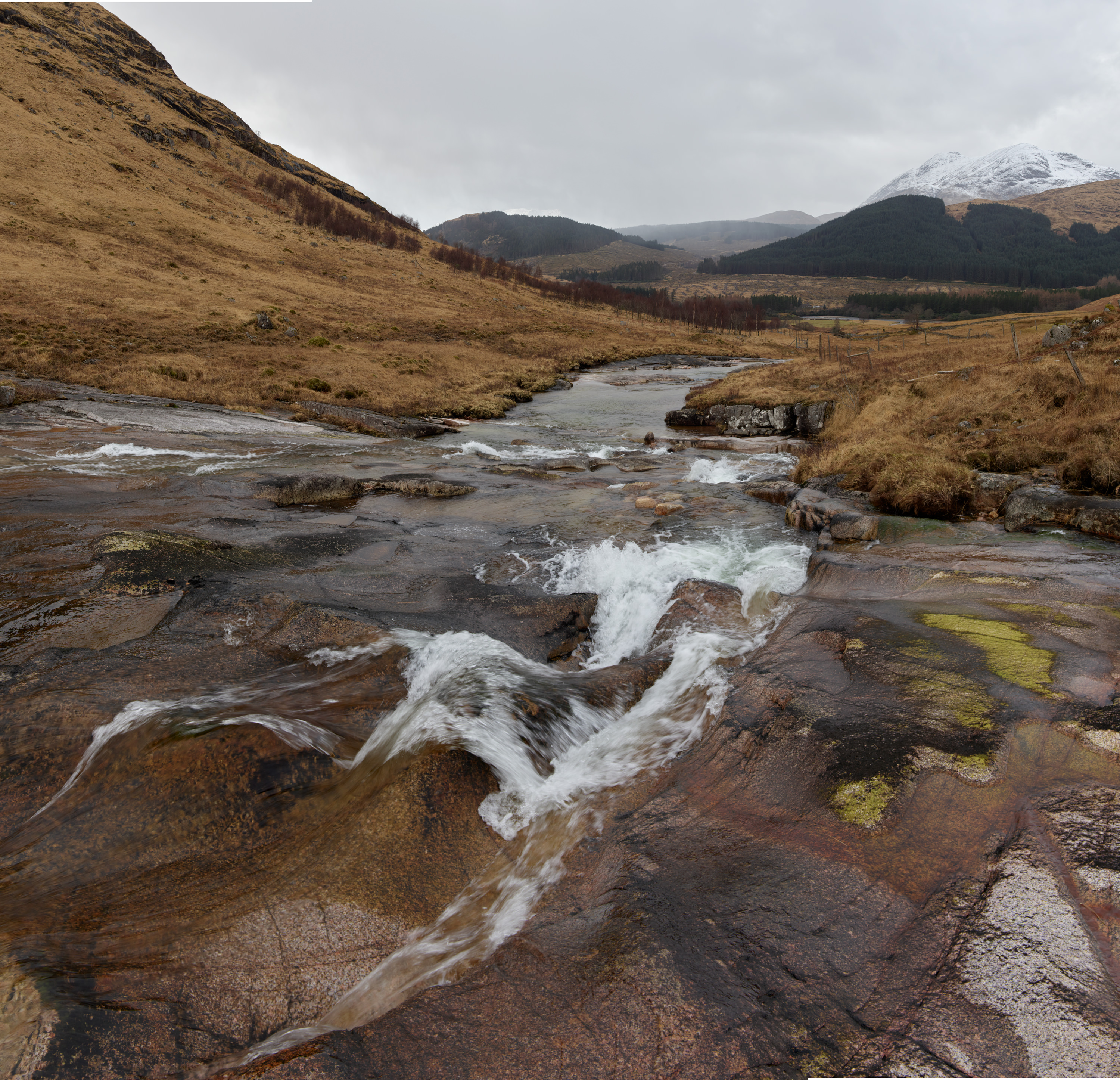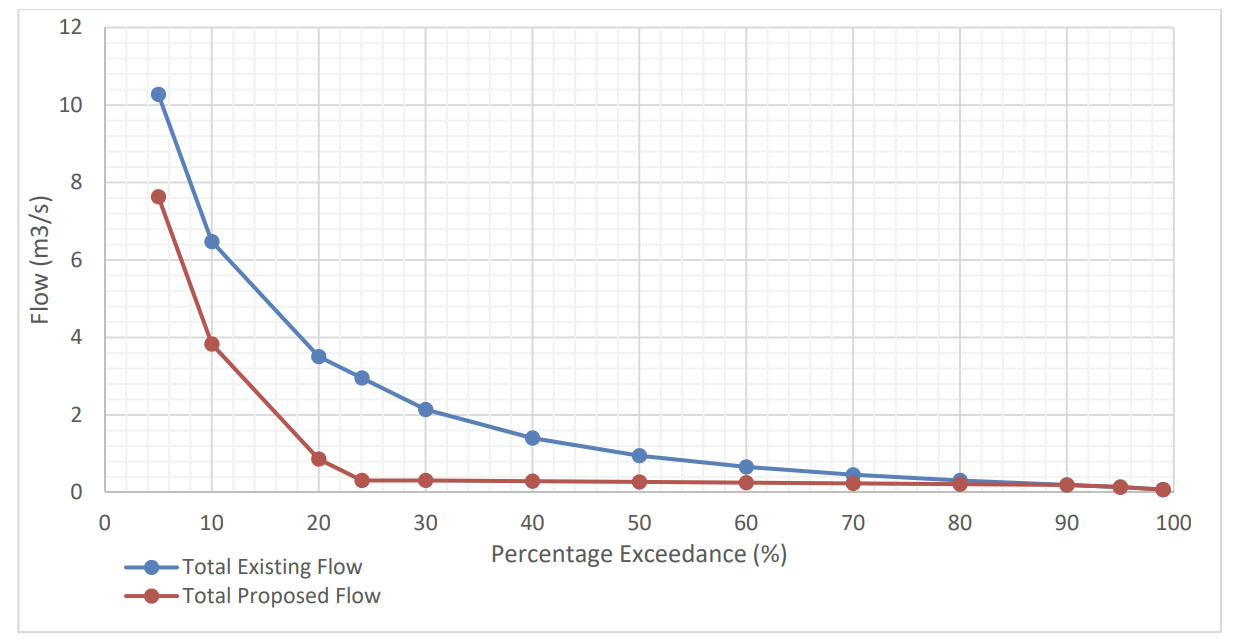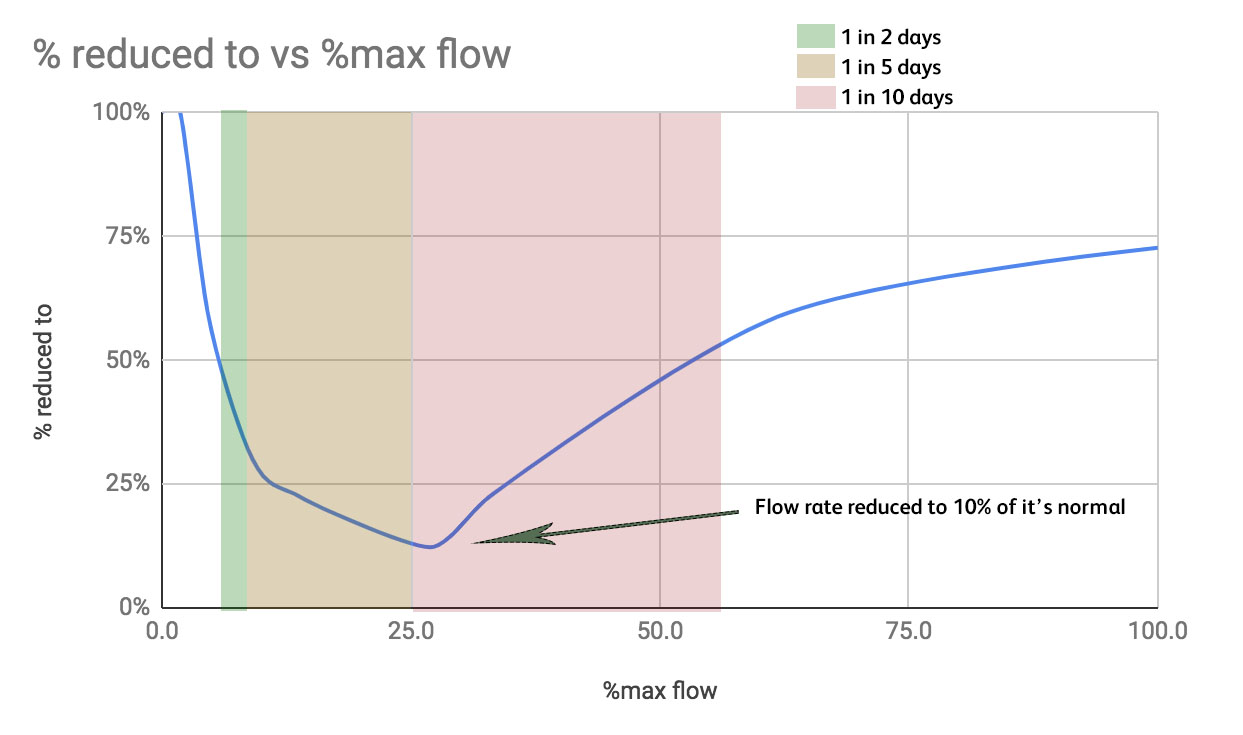Altering the River’s nature
“Fruitful glen of pools and fishes, Glen of hawks, blue eyed, crying”
Gleann Measach Iasgach Linneach – Deirdre of the Sorrows

Reduced Flow Effects
We have spent some time trying to work out how much the river flow will be reduced, and assessing the material effects of reducing this water flow.
Using information provided by Dickins Hydro Resources and the responses from Canoe Scotland, we produced a graph showing the percentage of water left post hydro installation, as compared to the river in full flow.
The following graph is from the developer:

This becomes clearer if we convert it to a percentage of water remaining after installation:

As you can see, the typical reduction for the majority of the time is between 70% and 90%. Only in extraordinary days of high or low flow is the river approaching it’s usual levels and at maximum flow. Even on these days, the river will be still diminished by 20-25%.
The Permanent Effects on the River
The reduction in flow not only affects the perception of the river’s wild nature – its look as well as its sound – but it also limits the river’s ability to clean itself. Plants, lichen and algae will encroach on the edges of clean rock, and what is now pristine pink Etive plutonic granite will become green and black from algae and lichen. Eventually, it will become overgrown with soil and grasses.
We believe that to change the flow of a river to this extent is to destroy the wild nature such that it loses its identity. All three tributaries will have their integrity and special qualities compromised, something that Scottish Natural Heritage should have identified in their assessment.

